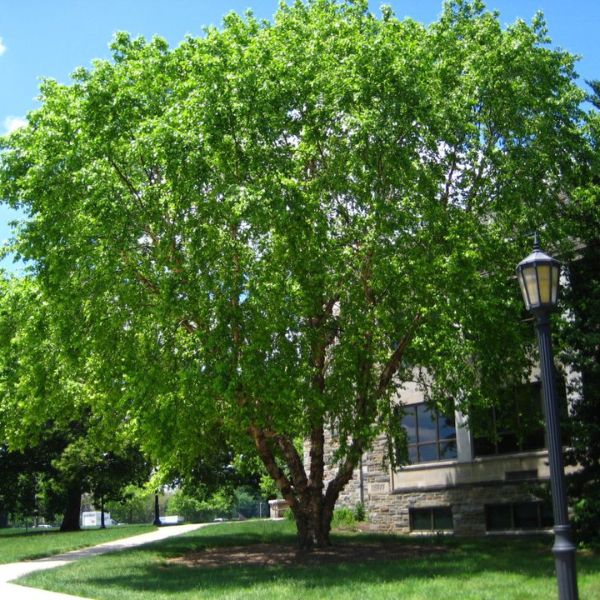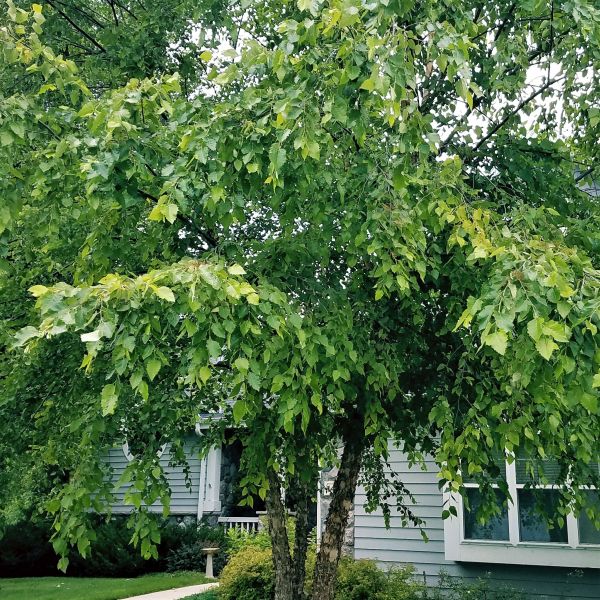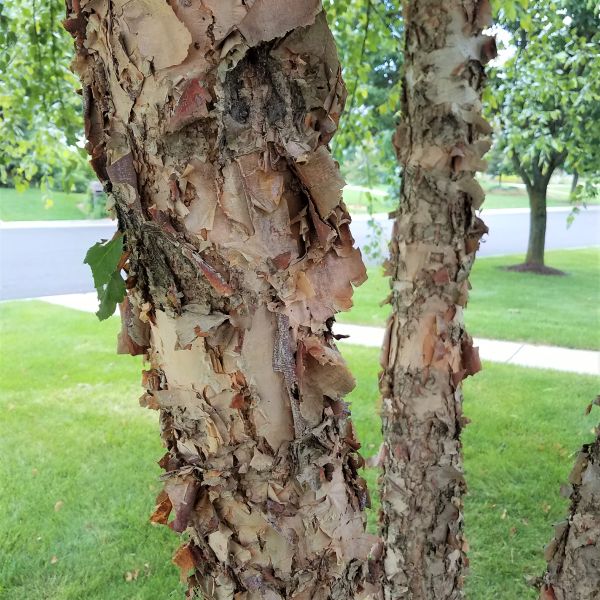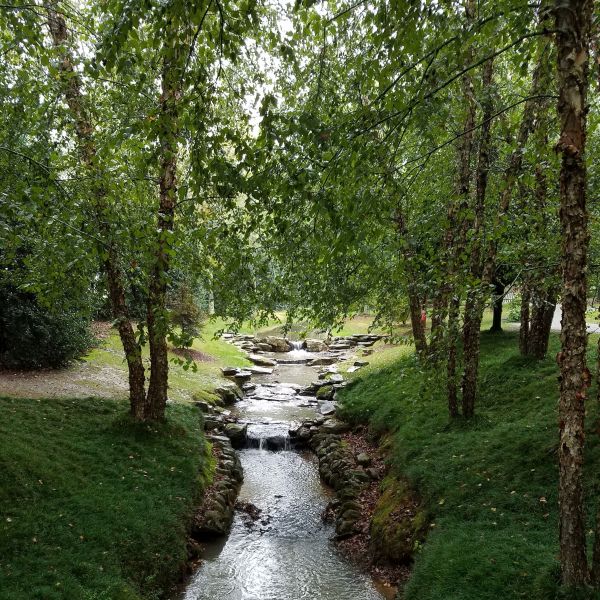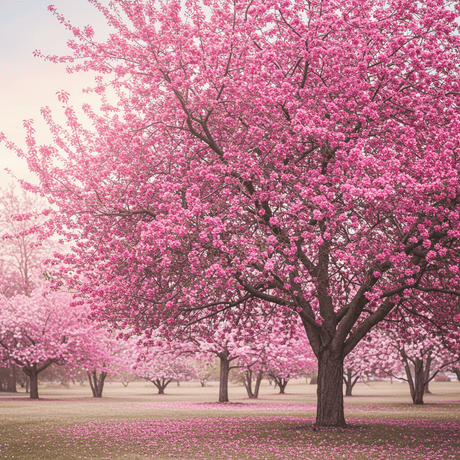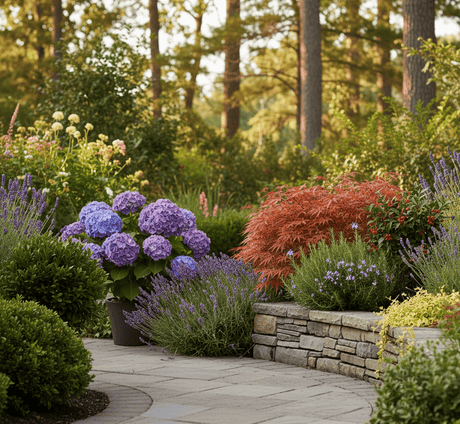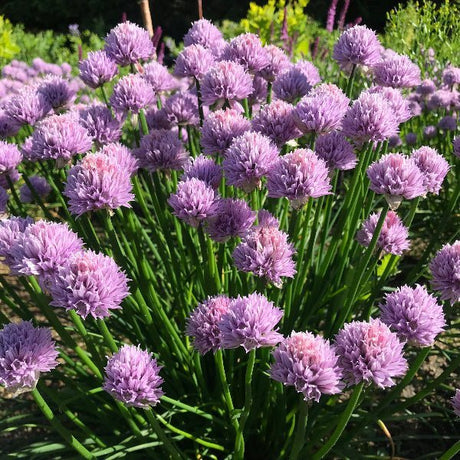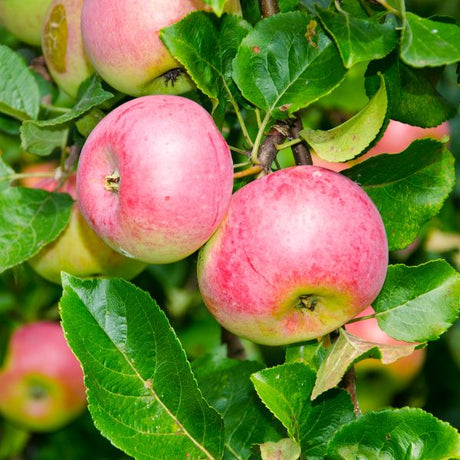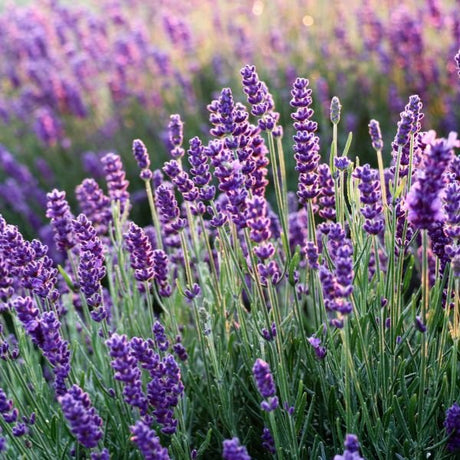River Birch Tree
Betula nigra
- Stay Protected with Plant Sentry ™
River Birch Tree - #1 Container Single Stem is backordered and will ship as soon as it is back in stock.
Plant Sentry™
Plant Sentry™

Plant Sentry™ Protected
Your order is protected by our compliance system that:
- Prevents restricted plants from shipping to your state
- Ensures plants meet your state's agricultural requirements
- Protects gardens from invasive pests and diseases
Delivery and Shipping
Delivery and Shipping
Delivery and Shipping
Fast, Safe Plant Delivery
Ships in 3-4 business days • Tracking provided • Weather protected
| Under $50 | $9.99 |
| $50 - $99.99 | $14.99 |
| $100 - $149.99 | $16.99 |
| $150+ | $24.99 |
✓ Zone-specific timing • ✓ Professional packaging • ✓ Health guarantee
Understanding Plant Options
Nature Hills offers plants in two main formats:
- Container Plants: Grown in pots with soil, sized by container volume and plant age
- Bare Root Plants: Dormant plants without soil, sized by height measurements
Container Plant Sizes
Container sizes indicate plant age and growing capacity rather than liquid volume equivalents. Our containers follow industry-standard nursery "trade gallon" specifications, which differ from standard liquid gallon measurements.
Young Plants (6 months to 18 months old)
| Container Size | Actual Volume | Metric Equivalent |
|---|---|---|
| 2" x 2" x 3" | 0.18 - 0.21 dry quarts | 0.20 - 0.23 dry liters |
| 4" Container | 0.31 - 0.87 dry quarts | 0.35 - 0.96 dry liters |
| 4.5" Container | 0.65 dry quarts | 0.72 dry liters |
| 6" Container | 1.4 dry quarts | 1.59 dry liters |
| 1 Quart | 1 dry quart | 1.1 dry liters |
| 5.5" Container | 1.89 dry quarts | 2.08 dry liters |
Established Plants (18 months to 2.5 years old)
| Container Size | Actual Volume | Metric Equivalent |
|---|---|---|
| 2 Quart | 2 dry quarts | 2.2 dry liters |
| #1 Container | 2.26 - 3.73 dry quarts | 2.49 - 4.11 dry liters |
| 5" x 5" x 12" | 3.5 - 4.3 dry quarts | 3.85 - 4.74 dry liters |
Mature Plants (2-4 years old)
| Container Size | Actual Volume | Metric Equivalent |
|---|---|---|
| #2 Container | 1.19 - 1.76 dry gallons | 5.24 - 7.75 dry liters |
| #3 Container | 2.15 - 2.76 dry gallons | 8.14 - 12.16 dry liters |
Large Plants (3-5 years old)
| Container Size | Actual Volume | Metric Equivalent |
|---|---|---|
| #5 Container | 2.92 - 4.62 dry gallons | 12.86 - 20.35 dry liters |
| #6 Container | 5.25 - 6.01 dry gallons | 23.12 - 26.42 dry liters |
| #7 Container | 5.98 - 6.53 dry gallons | 26.34 - 28.76 dry liters |
Bare Root Plants
Bare root plants are sold by height from the root system to the top of the plant. Plants may exceed minimum height requirements.
Common Sizes:
- Trees: 1 foot, 2 feet, 3 feet, 4 feet, 5 feet, 6 feet
- Shrubs & Perennials: 1 foot, 18 inches, 2 feet
Important Notes
Container Volume Specifications
- Trade Gallon Standard: Our containers follow industry-standard "trade gallon" specifications established by the American National Standards Institute (ANSI Z60.1) for nursery stock
- Volume Variations: Actual soil volume may vary due to plant root systems and growing medium settlement
- Age Indicators: Container size primarily indicates plant age and maturity rather than liquid volume equivalents
Growing Conditions
- Plant size can vary based on variety and growing conditions
- Container size helps indicate plant maturity and establishment level
- Larger containers generally mean more established root systems and faster landscape establishment
Seasonal Availability
- Bare root plants are available seasonally when dormant
- Container plants are available throughout the growing season
- Specific varieties may have limited availability in certain sizes
Questions?
For questions about specific plant sizes or availability, please contact our plant experts who can help you choose the right size for your landscape needs.
Plant Highlights
River Birch Tree highlights at a glance!
-
Botanical Name
-
Brand
-
Growing Zones3, 4, 5, 6, 7, 8, 9
-
Growth RateFast
-
Mature Height
-
Mature Width
-
Leaf Color
-
Fall Color
-
NativeYes
-
Pollinator FriendlyYes
-
Bloom PeriodEarly Spring
Characteristics
Where To Plant
When To Prune
- Late Winter
Water & Moisture Needs
- High
Sunlight Needs
Soil Needs
- Widely Adaptable
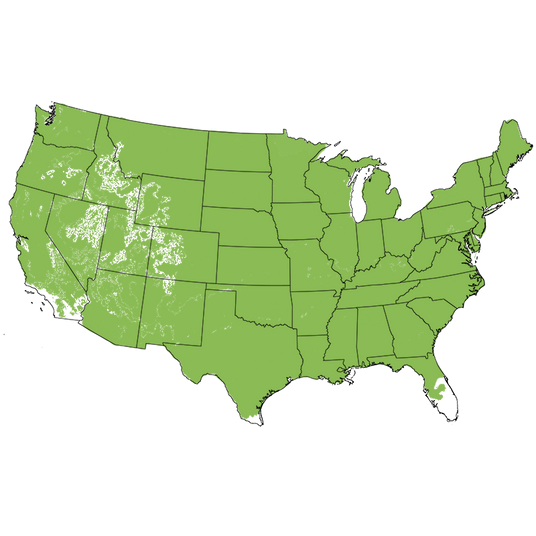
Growing Zones
Gorgeous, Hardy, Fast-Growing Native River Birch
- Gorgeous, Peeling, Salmon-Pink and Cinnamon-Brown Bark
- Fast Growing
- Pyramidal Growth Habit Becomes Rounded with Age
- Native American Deciduous Tree
- Glossy Green Leaves Make A Lovely Shade Tree
- Useful as A Specimen, Screening, Natural Groups, Shelterbelts
- Most Adaptable and Heat Tolerant of the Birches
- Most Bronze Birch Borer Resistant of the Birches
- Can Grow in Moist Soils
- Can Grow in Full Sun or Partial Shade
- Rarely Bothered by Deer
The River Birch (Betula nigra) is the most planted Birch in the United States and the best one for hot climates. It is a tree that has something to offer for every season.
It's world-famous for its silky, smooth, light-tan bark that peels and exfoliates to reveal tantalizing glimpses of beautiful salmon-pink and cinnamon-brown-colored patches beneath. The bark is an outstanding ornamental feature.
Lovely all year long, the River Birch is truly stunning in the winter. The graceful branches and the colorful, textured bark add interest to even the darkest winter day.
In the spring, River Birch grows fresh, light green leaves and female catkins that stand up on the ends of the branches. As the diamond-shaped leaves mature in the summer, they become a beautiful, shiny, dark green.
River Birches transform again in the fall. The male catkins will emerge dripping from the branches and the leaves will turn a brilliant butter-yellow that lights up the autumn landscape.
This is the hardiest of all Birches! It's a fast-growing, trouble-free tree that is a favorite of many. Young plants can double in size in a short couple of years!
Get started on your love affair with this wonderful native tree. Order your River Birch from Nature Hills today.
How to Use River Birch in the Landscape
River Birch are available in both single stem and multiple trunk clumps. Both options make specimen plants that can be used throughout the landscape in different applications.
As you can imagine, a single stem features a solitary trunk. Multiple trunk clumps usually have 3 or 4 strong leaders that emerge from a single point. Both versions are useful and can accent your landscape beautifully.
For a natural grouping, we recommend that you include both styles. Plant them 20 - 40 feet apart and vary the spacing between trees. There is nothing prettier than a meandering stand of River Birch near a water feature.
Sculpt a mounded berm in a large front yard, and include 1, 3, or 5 River Birch trees. You'll be thrilled at how quickly they establish themselves and start to fill in to mature size. They'll provide a nice natural screen to obscure the view into a large picture window.
Large, robust natural groups also look great butting up against an open park or green space. Try them as a fast-growing, easy-care living fence. Be sure to mulch underneath them to keep things really easy for yourself.
Tender green spring foliage is so welcome after a long winter and the unique male and female flowers add to the delight. Highlight that special season by adding long, skinny drifts of spring flowering bulbs in the planting bed. Use a mix of Hyacinth, Daffodils, and Tulips to extend the visual impact of the spring season.
River Birch makes incredible, long-lived, fast-growing windbreaks. Don't forget to include some in your shelterbelts in front of larger evergreen trees. The bright spring foliage and vibrant fall color will be dazzling against that steady, evergreen backdrop.
Use River Birch Clumps as a super way to create the walls of specialty garden rooms. Surround an outdoor firepit with a semi-circular planting bed and underplant young trees with Densiformis Yews and Red Twig Dogwood shrubs.
They'll create a nice, private space for you by screening out neighboring houses and ugly views in a very short period of time.
River Birch is a fantastic choice for a very wide-ranging set of conditions from the water's edge to upland sites. Because this tree can tolerate moist soils, it should be strongly considered to include in Rain Gardens.
These are specialized designs that are created to trap water runoff from roofs and streets. Tree roots filter the potentially polluted water before it drains directly into the storm sewer and onto local rivers and streams. Use River Birch in the Mesic—or middle—Zone of the Rain Garden planting.
Municipalities are even using them as street trees. They'll tolerate extremely tough conditions without a lot of care, fuss, or muss.
#ProPlantTips for Care
Although widely adaptable, River Birch will prefer slightly acidic soil. Test your soil pH and add Sulphur before planting. You can also add a few handfuls of peat moss to the planting soil backfill when planting. Feed it Dr. Earth Acid Lovers Organic and Natural Premium Fertilizer in early spring.
To establish young trees, we recommend providing a regular amount of water. Use the Finger Test to check the soil moisture. Stick your finger into the soil near the tree up to the 2nd knuckle. Is it still moist? Skip watering that day. Is it getting dry? Time to give them a nice, long drink.
Once the River Birches are established in your native soil, they are tough and rugged. They'll handle a bit of dry weather on their own. You will want to protect your investment with supplemental water in extended droughts. Tolerating almost any well-drained soil, even clay, and acidic soil.
In deer country, or where rabbits are present - consider creating a temporary fence around young trees. River Birch is not a favored food, but hungry animals will sample anything. Use repellent spray the first day you plant and reapply according to the directions. That's cheap insurance for your landscape investment. Once the trees reach size, they'll lose any appeal to local critters.
For pruning, wait until the River Birch tree leaves out in spring. You won't want to prune any earlier, as the sap is rising during that time. Waiting until later will help pruning cuts heal faster without dripping sap.
This tree grows very fast and can shade out smaller branches in the interior of the crown. We recommend planting it away from the patio and mulching underneath. Why not keep it easy on yourself? Using them in groups and mulched beds means you won't have to clean up beneath as frequently. The small leaves are easily bagged up in late autumn.
For a wonderful visual interest, the peeling exfoliating cinnamon bark of the native River Birch are hard to beat. Their rugged bark is a perfect foil to the airy, breezy foliage and works beautifully with modern, rustic, and contemporary styles.
You'll love River Birch from Nature Hills. Order today!
Frequently Asked Questions
How big does River Birch get?
The River Birch tree can reach a mature height of 25-30 feet tall and the same feet wide, in optimal conditions.
Is River Birch a good tree?
Featuring a slightly weeping form, the River Birch is an incredibly picturesque tree with 4 seasons of interest and low care. Their high heat tolerance and love of moist soils make them adaptable and resistant trees for your landscape!
Where should I plant a River Birch tree?
River Birch needs well-drained soil that’s moderately moist while becoming established and after that, they can tolerate mild drought and wet soil conditions. Be sure to select a site in full sun or part shade.
What is River Birch good for?
River Birch are great for shade and landscape accents, they also have wonderful four-season interest with colorful peeling bark in the winter, spring blooms, textural leaves, and fall color. Use as a street tree, as an understory tree beneath large trees, and is a fantastic wildlife tree.
Are River Birch trees messy?
River Birch are not messy trees, dropping catkins in spring which dry up and blow away quickly on their own, and then their fall leaves in autumn.
What Shipping Options Do You Offer?
NatureHills.com works closely with our growers and nursery professionals to ensure we ship when it is most appropriate for your area. Our goal is to deliver the hardiest plants by avoiding extreme high and low temperatures. Check out our shipping schedule for more information and to learn our wills and won’ts when it comes to shipping plants, trees, and shrubs. Find your River Birch Trees for sale here at NatureHills.com online garden center today!

